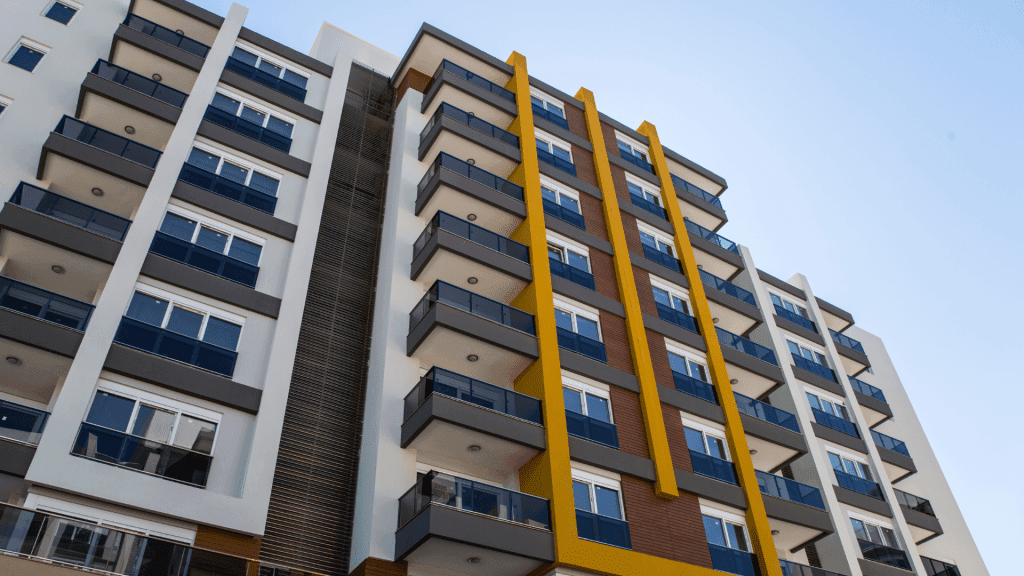Valuation of flex living promotions
Do you need advice for your projects?
Flex living is an accommodation concept that combines the flexibility of short- and medium-term rentals with hotel services and residential comfort. This hybrid model, born out of the need to adapt to increasingly mobile lifestyles, is attracting digital nomads, expatriates and mobile professionals, making it a growing option in large cities. With demand constantly growing, investing in a flex living asset requires valuation methodologies that integrate both financial and operational aspects. Below, we break down in detail what this professional valuation service consists of and why it is crucial for developers, investors and financial institutions.

What is flex living and why value it?
Flex living is defined as an accommodation model that allows stays ranging from a couple of days to several months, without the ties of a long-term contract. The offer includes fully equipped apartments or studios, where utilities, cleaning and other services are integrated into the rate. Halfway between traditional rental and hotel accommodation, flex living is a mixed asset, the value of which depends on both the real estate quality of the property and its operational exploitation.
Mixed asset: residential + operating
Unlike conventional residential housing, the value of a flex living development does not lie solely in the square footage or location, but in the ability to generate recurring income through management. Indicators such as user turnover, average length of stay and operating margins are as relevant as the construction quality and design of the building. For this reason, the valuation of such an asset must integrate real estate market analysis and operating simulations.
Ideal for investment and diversification
For investment funds, family offices and real estate developers, flex living represents an opportunity to diversify portfolios and obtain stable returns. Its distinguishing feature –contractual flexibility –makes it an attractive product for professional profiles with frequent mobility, guaranteeing high occupancy levels and recurring cash flows. In addition, the scalability of the model facilitates expansion into secondary and tertiary markets, optimizing geographic diversification.
Factors influencing the valuation of flex living developments
The valuation of Flex Living relies on a set of variables that directly impact both real estate value and operating performance. Understanding each of these factors and their interrelationship is critical to producing an accurate and decision-useful valuation report.
Location and connectivity
The location of the asset is a determining factor in any real estate valuation, but in the case of Flex Living it takes on an additional dimension. It is not enough to be well located; the property must offer easy access to public transportation, such as subways, commuter trains and urban or intercity buses. Likewise, proximity to leisure areas, gastronomic spaces and cultural centers contributes to raising the quality perceived by the user, facilitating the setting of higher rates. Proximity to business areas, coworking centers and corporate headquarters increases demand from professionals seeking temporary accommodation near their workplaces.
Occupancy level and profitability per unit
Two key operating indicators in the valuation of Flex Living are the average annual occupancy rate and the average revenue per available unit, often referred to as RevPAU (Revenue per Available Unit). The occupancy rate reflects the percentage of days per year that units remain rented, while RevPAU combines that occupancy with the rate charged, either daily weekly or monthly.
Services offered and amenities
The level of services included in the rate is a differentiator that directly influences the perception of value and the ability to set premiums over the standard market rate. Flex Living developments that incorporate cleaning and laundry services, high-speed Internet access, common areas equipped with coworking, gym, lounge and terrace have a greater ability to attract and retain users. In addition, the implementation of advanced technology, such as smart check-in and check-out systems, automated access control and digital payment management, improves the customer experience and reduces operating costs. .
Operating efficiency and operating costs
A critical factor in determining the market value of a Flex Living project is operational efficiency. A model that integrates automated check-in processes, predictive maintenance management and centralized procurement of supplies translates into higher net operating income, improving overall profitability. Controlling energy and utility costs by installing consumption monitoring systems and cost-saving technologies also reduces recurring expenses. These savings are incorporated into the valuation through a detailed analysis of projected financial statements, adjusting cash flows to account for economies of scale and the ability to standardize operations across assets.
Internal management vs. external operator
The decision to opt for in-house management or to hire a specialized operator significantly affects the risk profile and, therefore, the valuation multiple applied. An external operator with specific Flex Living expertise brings know-how in revenue management, digital marketing, distribution contracts and dynamic price adaptation, which usually translates into higher occupancy rates and higher revenues. However, taking management in-house can be profitable if the developer has a consolidated structure and can efficiently internalize services. The valuation should consider both options, evaluating the contractual cost of an operator versus the investment required to develop in-house capabilities, and adjusting the discount rate based on the operational risk profile.
When can a flex living promotion be assessed?
Theproject phasedetermines the valuation methodology and parameters. Each stage of the development’s life cycle requires a differentiated approach to estimate value as accurately as possible.
Project in design phase
At the beginning, when there are still no definitive plans or closed budgets, the valuation is based on a feasibility study. The buildable area, the number of units and the target client profile are projected. Based on market comparables, average rates and expected occupancy levels are estimated. Approximate costs for construction, licenses, fees and marketing are also established.
Asset under construction or renovation
When work has already begun or the property is in the process of being rehabilitated, the valuation combines the DCF method with an inverse cost approach. The value of the land, the costs already incurred and the future costs of completion, including possible contingencies and budget variances, are taken into account.
Consolidated operating assets
Once the property is operational and generating real cash flows, the valuation is based on historical and current income and expense data. Calculation methods are used to provide a sound market valuation, based on operational reality and current market conditions, which provides transparency and certainty for both buyers and sellers.
Discover our valuation services
Tecnitasa Group offers valuations of all types of assets. Its expert team applies specific criteria for each type of asset, adapting to the particular needs of clients. Explore the available sub-services, each valuation is tailored to the characteristics of the asset.
Latest news on valuation
Check our blog for up-to-date news and specialized articles on the valuation industry. We offer information on trends, market changes, regulations and advice for owners and investors in this segment.
We provide you with a team of economists, appraisers and specialists in hotel operations with a proven track record in mixed residential assets. We prepare reports for financial institutions, family offices and investment funds, adapting each study to the characteristics and objectives of each project.
Contact us today and find out how our Flex Living valuation can boost your project and maximize its market value.
Frequently asked questions about flex living
What is the difference between flex living and a traditional rental?
The main difference lies in the flexibility of stays and the inclusion of services. While traditional renting is limited to long-term contracts and lacks integrated services, Flex Living offers short- and medium-term contracts with cleaning, maintenance and utilities included, professionally managed to optimize occupancy and revenue.
Can a flex living development be valued before it is built?
Yes, through feasibility studies that project buildable areas, number of units, market rates and construction costs. Based on these data, a discounted future cash flow model is developed to calculate the Net Present Value and the Internal Rate of Return of the project.
What documentation is needed to value a flex living asset?
An accurate valuation requires the developer’s business plan, architectural plans and construction budget, as well as the contract with the operator (if any), detailed financial projections, applicable rate analysis and occupancy estimates.
What type of investors are looking for flex living assets?
Among the investors most interested in this type of assets are alternative investment funds, SOCIMIs, family offices, banking entities and operators specialized in hybrid assets seeking to diversify their portfolios with products with stable profitability and geographic scalability.
